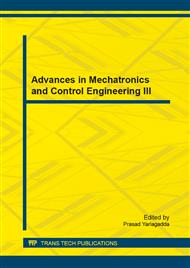p.228
p.233
p.238
p.242
p.252
p.260
p.264
p.268
p.274
Primary Total Ionizing Dose Effect Studies on Xilinx SoC Irradiated with 60Co γ Rays
Abstract:
We designed radiation effect experimental system including current measurement section and functional test section for Xilinx Zynq-7010 System on chip (SoC) and performed the Total Ionizing Dose (TID) experiment irradiated by Co60 γ-source on the chip. At the dose rate of 0.04 Gy(Si)/s, the total dose of 1.69 kGy(Si), the current value in the experiment increased first and then decreased. The test board got functional interruption at the gamma dose of 1.69 kGy(Si). The function of the board normalized after room temperature annealing and 70°C high temperature annealing except that the current value decreased by 28% compared to the current before irradiation. The mechanisms for the first TID test results on Xilinx SoC were deduced and discussed.
Info:
Periodical:
Pages:
252-259
Citation:
Online since:
October 2014
Authors:
Keywords:
Price:
Сopyright:
© 2014 Trans Tech Publications Ltd. All Rights Reserved
Share:
Citation:


